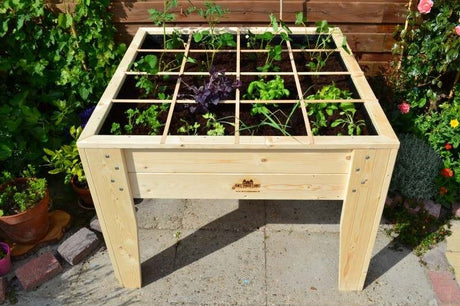Table of Contents
Introduction to Growing Eggplant - Gorgeous, Sexy Plant
Growing eggplant - If there were a prize for the most beautiful of all vegetables, I'd give the eggplant a run for its money. The way the green dragon's head practically blows out the purple, shiny, elegant, even sexy fruit is truly beautiful. It's no wonder the vegetable has a feminine name. I grow at least 5 to 10 plants of this magnificent fruit in my beautiful pink ACD greenhouse. You can read all about growing eggplant in this growing guide. Sowing eggplant is an investment in flavor for your summer barbecue. Besides ratatouille, a heartwarming dish with plenty of Provençal vegetables and herbs, I use eggplant in a variety of ways. Grilled in slices with olive oil, pepper, and coarse salt. On a skewer with bell peppers, fennel, and onion on the barbecue. Or cut it in half and score it with a knife to insert garlic cloves. You cook everything in the oven, remove the flesh from the skin, and puree it into a delicious toast spread. A sprig of parsley and you've got yourself a truly delicious meal. I have to admit, sorry Stefanie, I'm in love with eggplant.
Growing Eggplant - Step by Step Towards Our Great Love
There are two ways to ensure you can harvest eggplant in the summer. You can start eggplant from seed, but you can also buy eggplant plants starting in April. Eggplants originated in Asia, so it's not surprising that we can't simply grow them in our climate. Experienced growers who know exactly what the plant needs can grow them to maturity using just their greenhouse and harvest them at the end of the summer. But I want to eat eggplant in July, so I'm growing them in a propagator. In my propagator, the plants germinate along with the peppers and bell peppers in December. When I transplant them, they go into the Vitopod, which has a higher height, but you can also continue growing your plants indoors under grow lights without a heated propagator. It might be cheaper to simply buy your plants in April, but the enjoyment of my hobby makes it more than worth the effort or the money. A daily trip to my grow boxes , my greenhouse, and my vegetable garden rounds off my workday nicely. Adding some more water, adjusting the temperature, removing some leaves... that brings peace. Even in winter.











1 comment
Aantrekkelijke website!